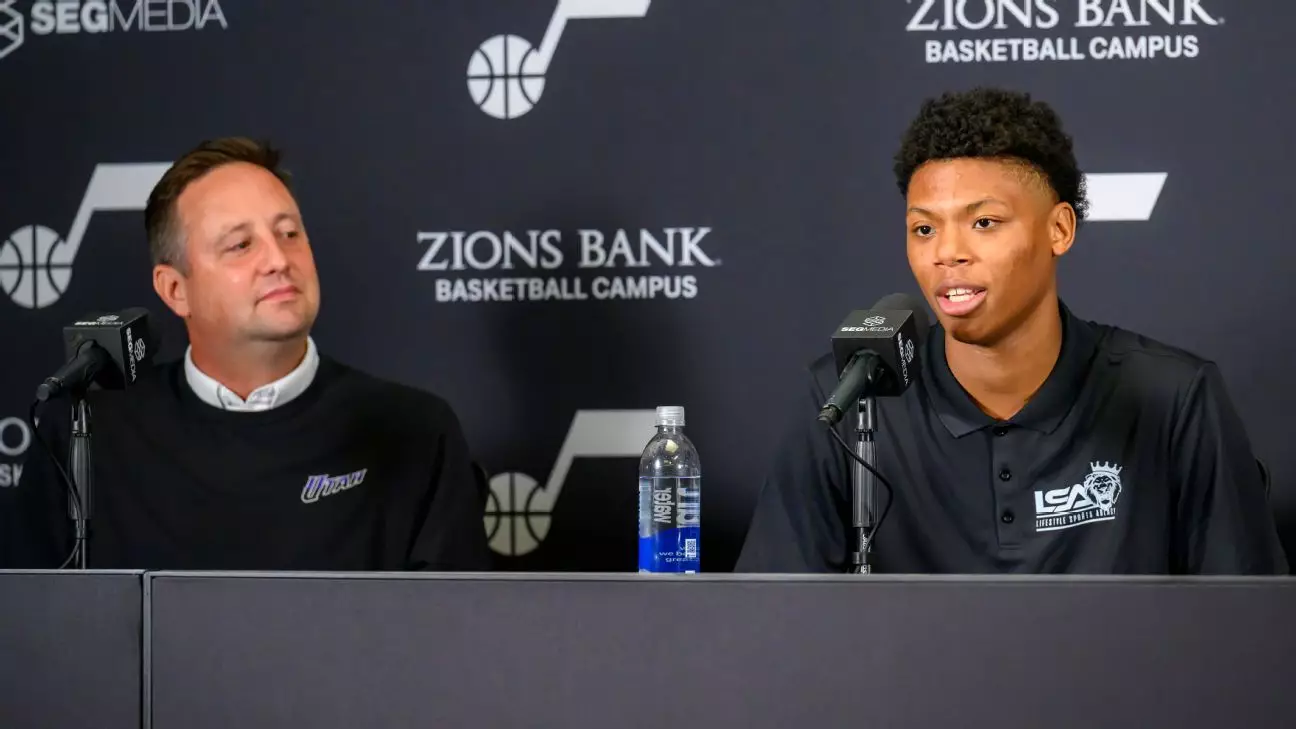Ace Bailey’s selection by the Utah Jazz as the No. 5 pick in the NBA draft is a compelling narrative not just about a young athlete’s journey, but also about broader systemic issues within the professional basketball landscape. Before the draft, Bailey became the subject of scrutiny mainly because of his unorthodox pre-draft process—he declined workouts for teams interested in him, including the Jazz themselves. This behavior led to criticism that feels shortsighted given how commonly players navigate complex dynamics around workouts, agent advice, and personal preferences. Rather than viewing this as a red flag, it would be far more productive to consider the pressures these young athletes face and how their agency is often overlooked or unfairly judged.
Bailey’s decision not to work out for certain teams, including Philadelphia and Charlotte, was widely covered as a mistake or act of hubris. Yet, when the Jazz picked him anyway—despite him reportedly not favoring Salt Lake City—it speaks volumes about the fractured state of NBA talent evaluation and negotiating power. Often, players are seen only through the lens of compliance or defiance. Recognizing Bailey’s individual strategy, regardless of whether it aligns neatly with team expectations, challenges those simplistic narratives.
The Draft Drop: A Symptom of Myopic Talent Valuation
Once projected as a top-three pick by numerous mock drafts, Bailey’s slide to No. 5 encapsulates the irrational paranoia teams develop over perceived flaws. Criticisms about his efficiency, ballhandling, passing, defensive intensity, and “maturity” contributed to his draft fall. But defining maturity in a young athlete often echoes subjective biases that can stifle raw potential. These intangible qualities, notoriously difficult to measure, become catch-all reasons to dismiss prospects, sometimes unfairly.
Bailey’s collegiate performance at Rutgers—averaging 17.6 points and 7.2 rebounds, with an ability to shoot from beyond the arc—should have counterbalanced these concerns rather than magnify them. His ability to stretch the floor while maintaining inside scoring challenges traditional pigeonholing of forwards. This versatility is emblematic of a new generation of multidimensional players, which the Jazz explicitly acknowledged in hopes that they can seamlessly integrate him into their rotation.
In a league increasingly driven by data, there remains a stubborn reliance on subjective scouting reports that can overemphasize “lack of polish” instead of potential trajectory. For young players like Bailey, falling in the draft isn’t always about capability but about shifting perceptions rooted in risk aversion.
From Criticized Prospect to Jazz Hopeful: A Lesson in Growth Mindset
Bailey’s public demeanor following the draft reveals an admirable maturity—a willingness to accept imperfection and an unwavering belief in his capacity to improve. His quote about trusting his work ethic and acknowledging mistakes reflects a refreshing self-awareness that the NBA sorely needs more of. It also subtly rebukes the oft-patronizing narrative that young draftees must immediately be polished professionals.
Utah’s front office, led by Austin Ainge, lauds Bailey and his fellow rookies as high-character, high-potential players capable of impacting defense and offense alike. This holistic view of player value—not just scoring prowess but effort, versatility, and character—is encouraging. Yet it remains to be seen if the Jazz’s optimism withstands the brutal realities of NBA development and how the league’s culture can sometimes stifle rather than cultivate such attributes.
Reflecting on Agency and the NBA’s Structural Challenges
Bailey’s story forces a necessary conversation about the balance of power and communication during the draft process. Players often feel compelled to assert control over their futures in ways that are not always understood or appreciated by teams and media alike. The traditional model—where prospects are expected to be fully compliant and malleable—is outdated and fails to acknowledge young men’s autonomy.
Moreover, the tunnel vision on “fit” and “maturity” risks discounting players who may need time to develop beyond the checklist criteria laid out by front offices. The Jazz’s gamble on Bailey is indicative of a more progressive approach, but the broader NBA ecosystem still leans toward conservative choices at the expense of nurturing genuine talent.
In embracing a center-wing liberal stance, we can assert that talent evaluation should be humanized, equitable, and inclusive of players’ voices. The league must reconcile its fervor for analytics and scouting with a more empathetic understanding of individual pathways. Bailey’s journey is emblematic of the tension between rigid expectations and genuine potential, a tension that can only be resolved by a more nuanced approach to player development and respect for young athletes’ agency.



Leave a Reply